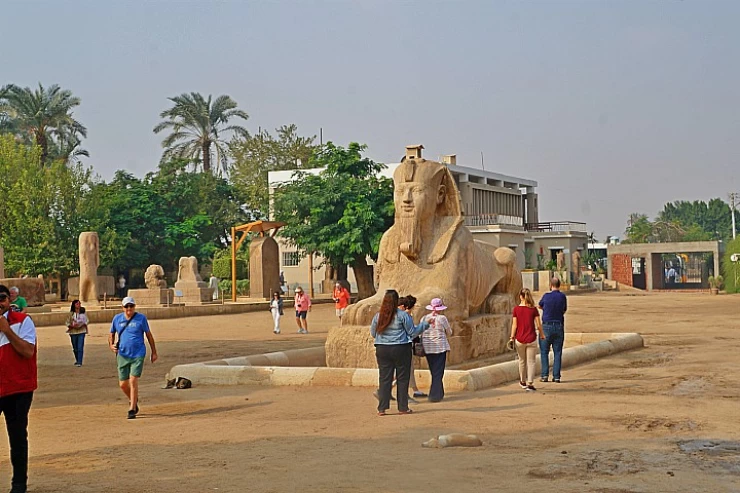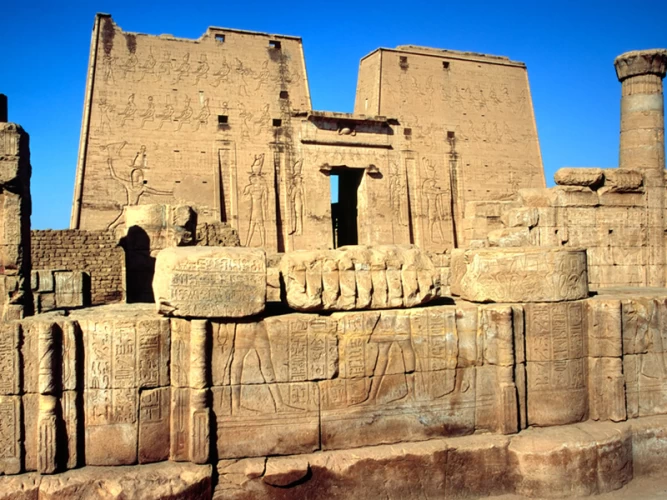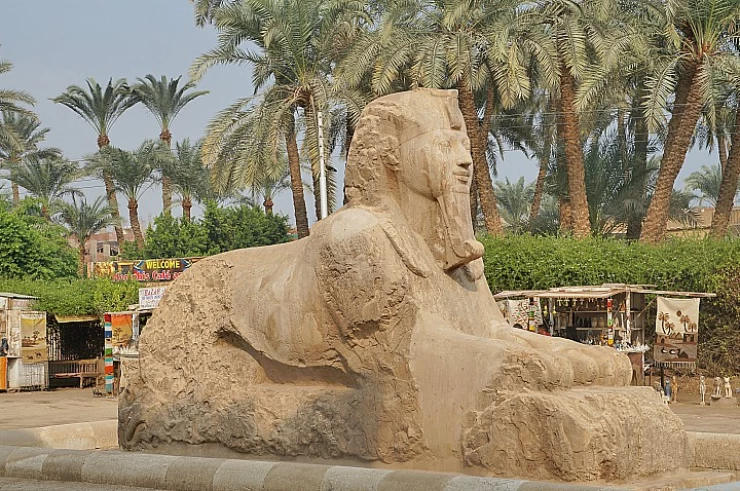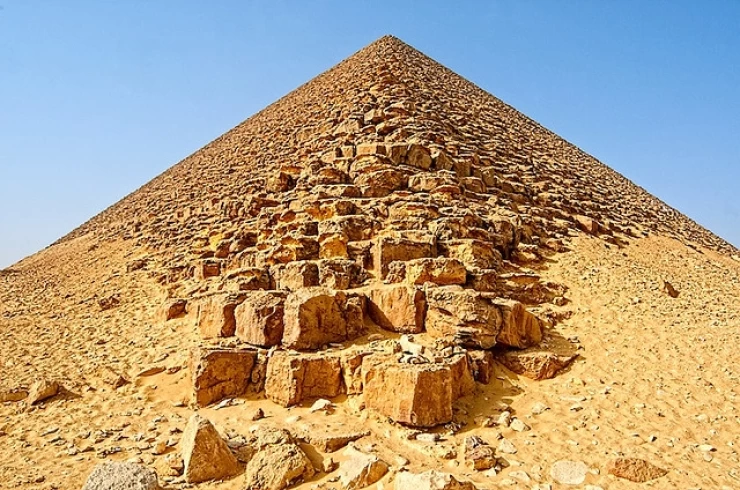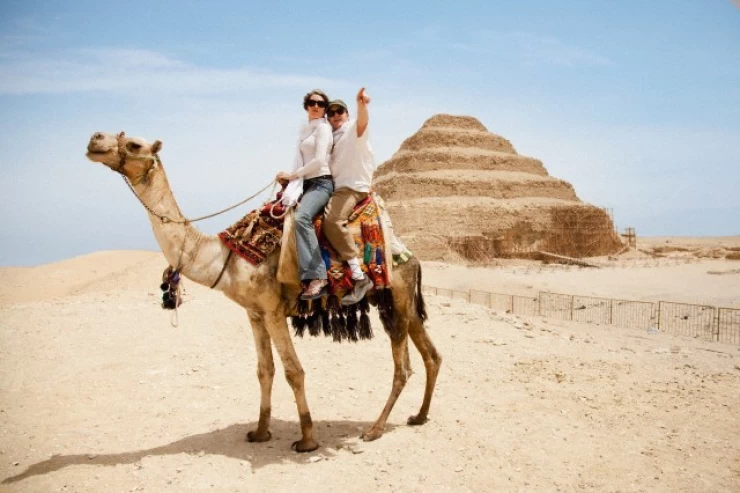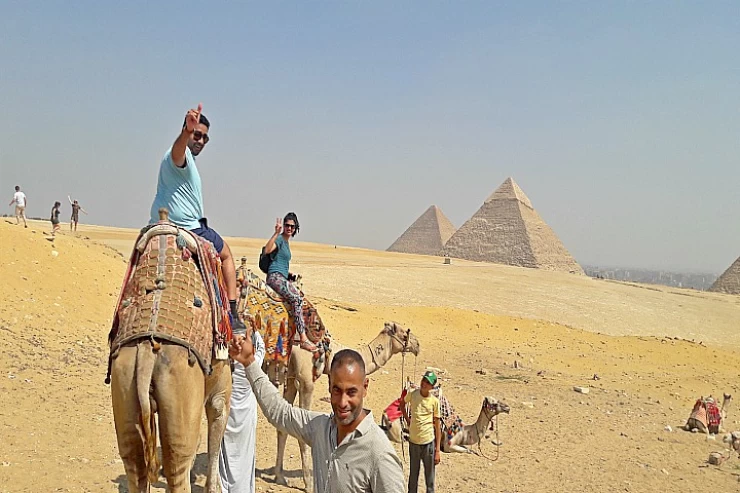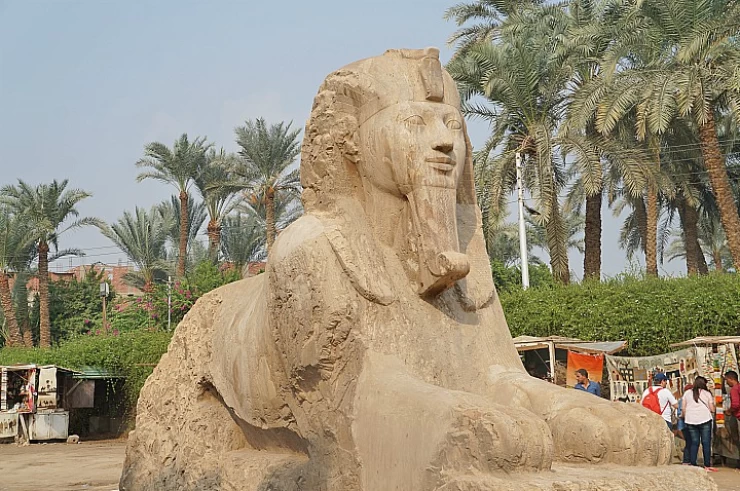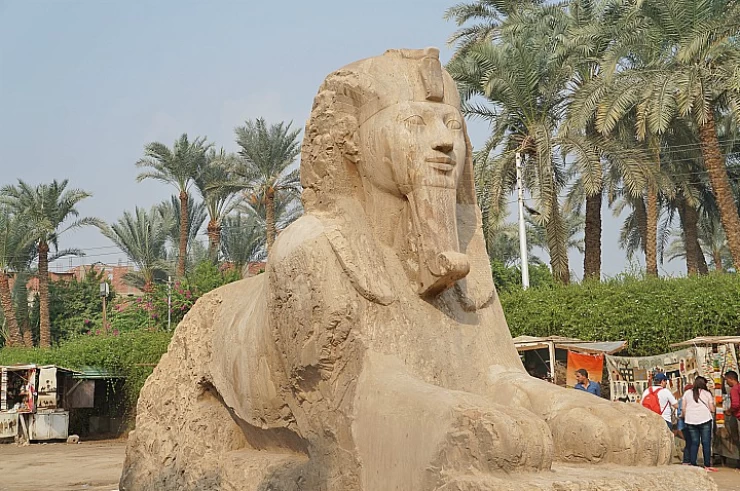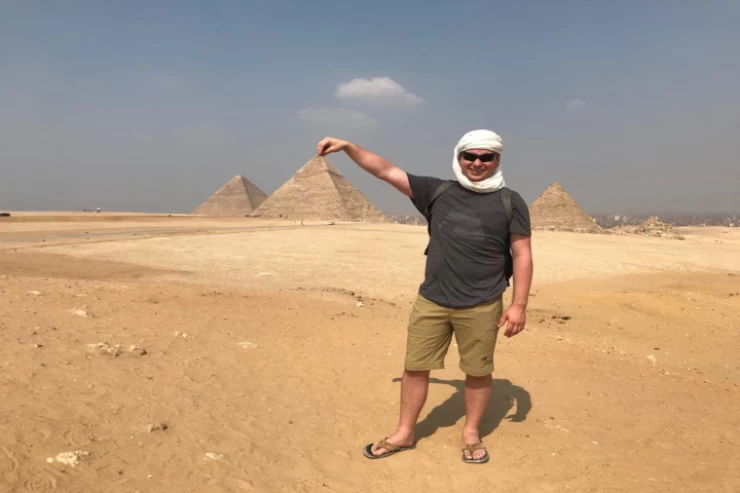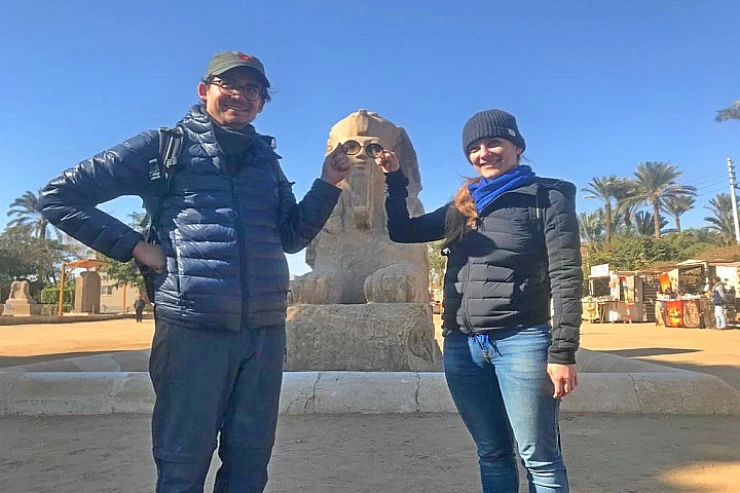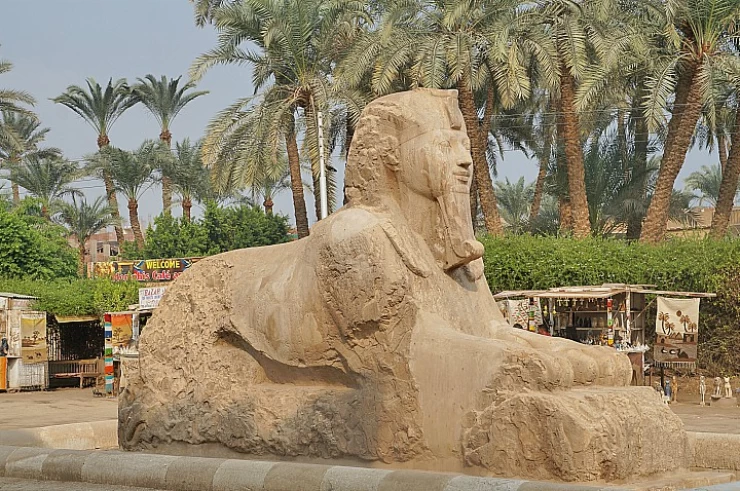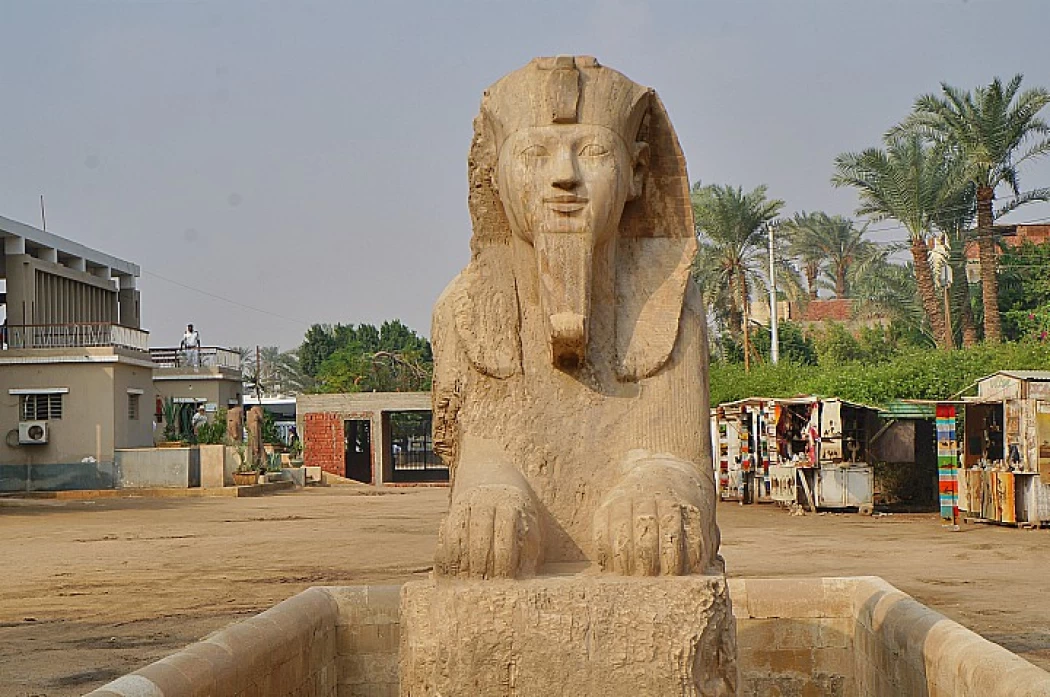
The Alabaster Sphinx of Memphis
Memphis is the very first Egyptian city and one of the first cities in the world. Founded in 3200 BC, before the four ancient cities of Ur and Babylon and well before Rome and Jerusalem, yet unlike Rome and Jerusalem, Memphis did not survive into modern times. It lies 30 km south of Cairo.
Memphis was founded by the legendary Narmer, a native of Upper Egypt. Narmer conquered the Nile delta and was the first to unify the two kingdoms of Upper and Lower Egypt. Narmer was an administrator as well as a warrior, and realized that he would have a hard time governing the two kingdoms of Upper Egypt. So he founded this city at the junction of two countries. Its privileged position on the west bank of the Nile, between the cultivated area and the desert plateau, and just above the Nile delta, 30 km south of Cairo, was the key to its power. From there, it was easy to keep an eye on the comings and goings between Lower and Upper Egypt.
The name of this place was first Inb Hedj, in hieroglyphic, meaning the white wall, due to a limestone wall. The White Wall was erected by Pharaoh Pepi I, the 3rd pharaoh of the 6th pharaonic dynasty, around the 24th century BC. Memphis is the Greek pronunciation of the Egyptian expression Men Nefer, meaning stable beauty. Memphis is also known as Hat Ka Ptah, meaning temple of the spirit of Ptah, the oldest sanctuary dedicated to the god Ptah, of creative forces. Following linguistic modifications, this expression gave rise to the name of Egypt as we know it today.
Founded by Pharaoh Narmer (Menes in Greek) in the 4th millennium BC. It was Pharaoh Djeser, founder of the Old Pharaonic Empire, who gave Memphis all its lustre by having splendid necropolises built nearby, including his tomb, the famous step pyramid of Saqqarah. Memphis was a religious center, home in particular to the sanctuary of its mythical founder, the god Ptah, where the coronation ritual was performed as a token of the legitimacy of power.
It was also a major administrative center, and above all the residence of the pharaohs of the Old Kingdom, who built their tombs nearby. Memphis was home to an important river port, perhaps the first in ancient Egypt. Alluvial deposits and sandbanks did not permit the establishment of ports on the coast until the Greco-Roman period. Specialized in the manufacture of weapons, it was the country's arsenal.
Latest Articles
Admin
Aswan Governerate in Egypt
Aswan was known as ‘Sonu’ in ancient Egyptian times, meaning market, as it was a trading centre for caravans coming to and from Nubia. In the Ptolemaic era, it was called ‘Sin’ and the Nubians called it ‘Yaba Swan’. It was also known as the Land of Gold because it served as a great treasure or tomb for the kings of Nubia who lived there for thousands of years. Before the migration, Aswan's borders extended from Asna in the east to the border of Sudan in the south, and its inhabitants were Nubians, but after the Islamic conquest of Nubia, some Arab tribes settled there.
Admin
About Luxor Governorate in Egypt
The South Upper Egyptian area is home to the Egyptian governorate of Luxor. Its capital is Luxor, which was formerly Thebes, the capital of Egypt throughout multiple pharaonic eras. Its centers and cities are spread over both sides of the Nile River. The said governorate was established by Presidential Decree No. 378 of 2009, which was promulgated on the 9th of December of that year.
Admin
History of kafr El Sheikh Governorate
Kafr El Sheikh Governorate, located in the far north of Egypt in the Nile Delta, overlooking the Mediterranean Sea, is characterised by the diversity of natural life and environments, and is one of the Egyptian cities that can be visited after the end of the first semester exams at universities and schools, as it features many diverse tourist and recreational places at symbolic prices within everyone's reach.
Admin
Egypt's New Administrative Capital
The New Administrative Capital is considered the project of the era because it reflects a perfect image of the future and progress on the economic, cultural, social and civilisational level, as the capital is considered the new capital of Egypt at the present time. The importance of the New Capital is that it is a comprehensive transformation of the future of buildings, services and national and mega projects in Egypt.
Admin
Al Gharbia Governorate
The Governorate of Gharbia is inclusive in the geographical area of The Arab Republic of Egypt which is in the African continent, more specifically in the region surrounding the Nile delta, between Damietta and Rashid governance. To the control of the region from the north is Kafr El-Sheikh Governorate, from the south Menoufia Governorate, from the east – Dakahlia, Qalyubia Governorates, and to the west is the Beheira Governorate.
Admin
Hamata Islands (Qulaan Archipelago) in Marsa Alam
Each reserve has several sectors. In Wadi El Gemal Reserve, there is one of the natural areas called the Hamata area or Hamata sector in Wadi El Gemal Reserve. Its sectors are the perfect and most ecological, land and water, and host countless animals and plants found in the oceans and on the land.






